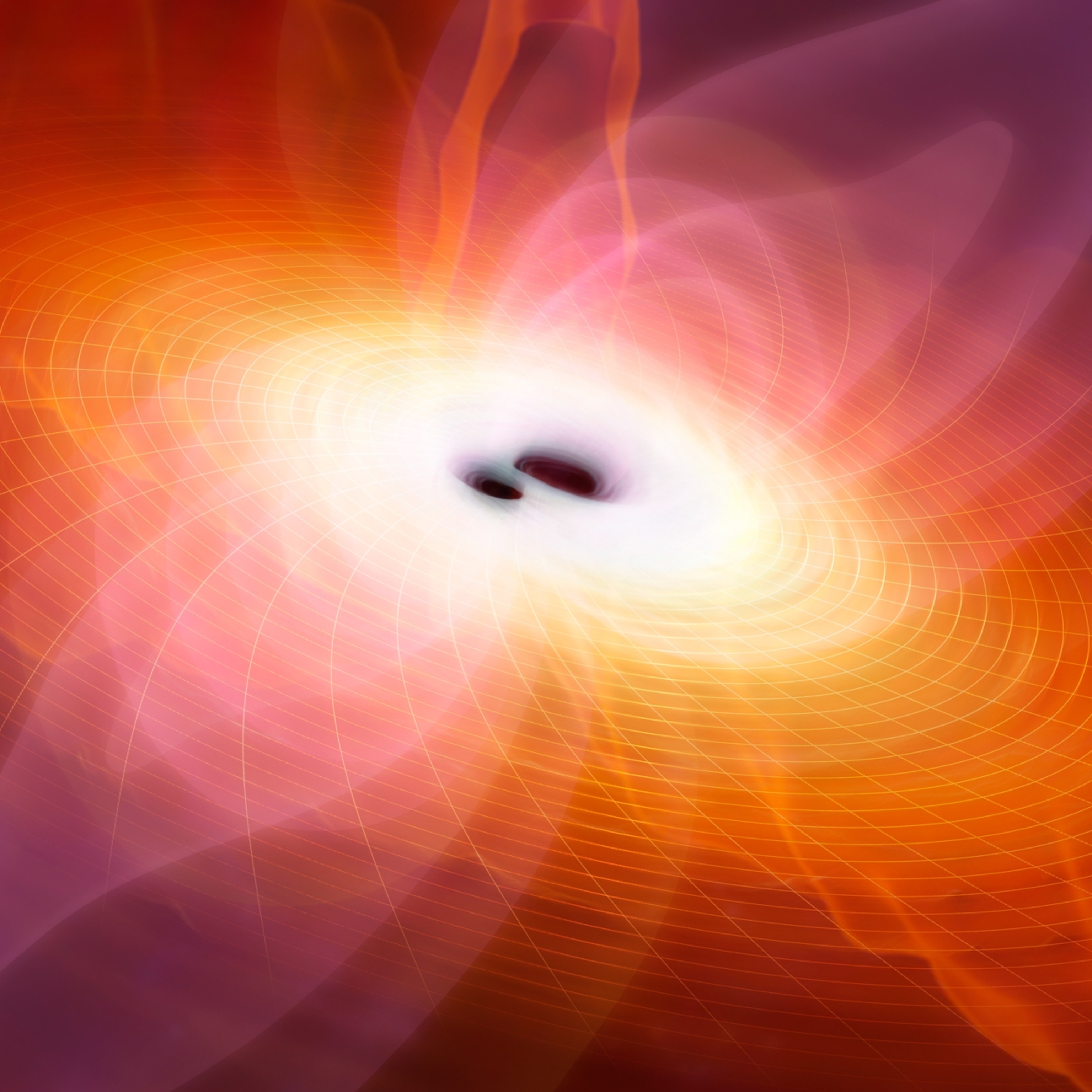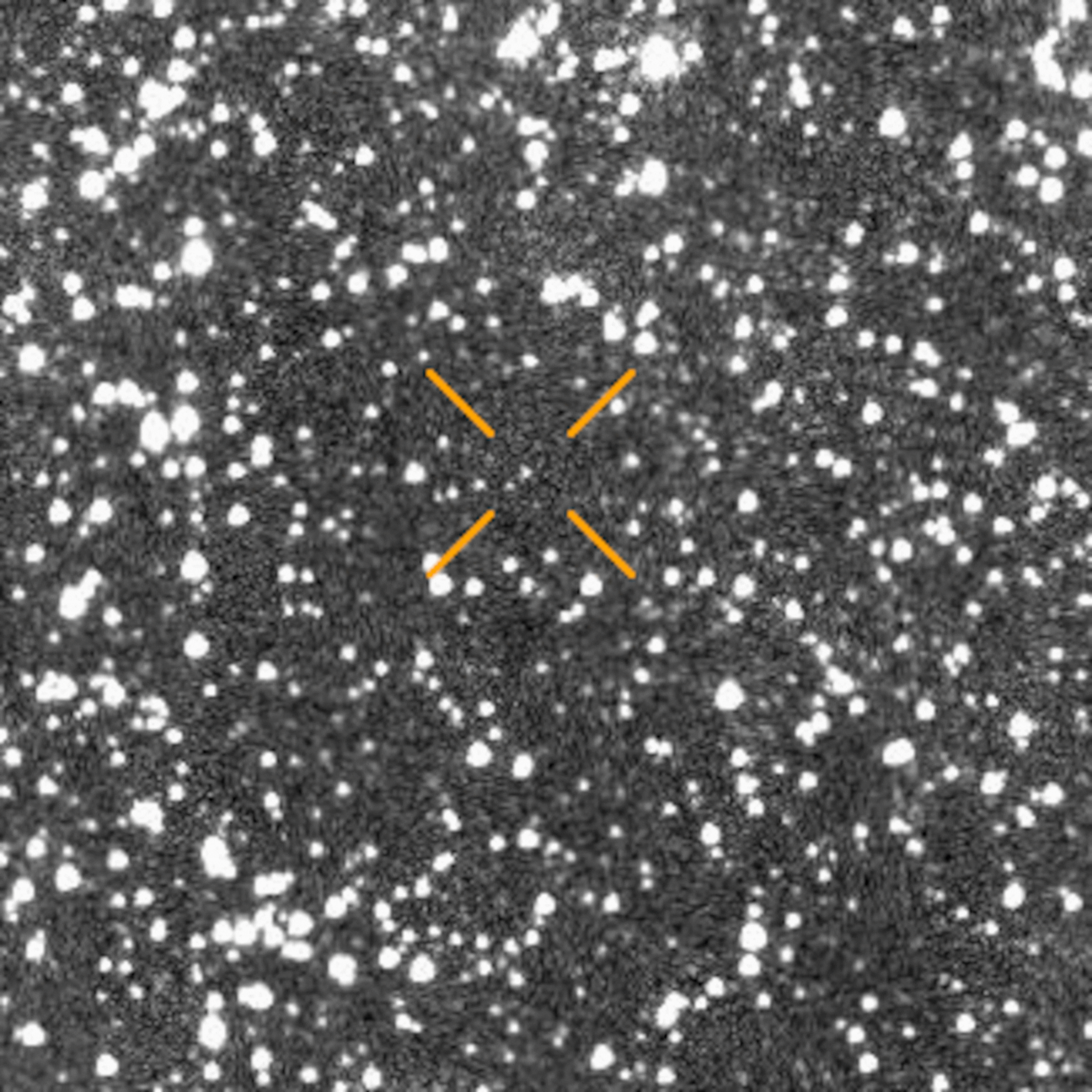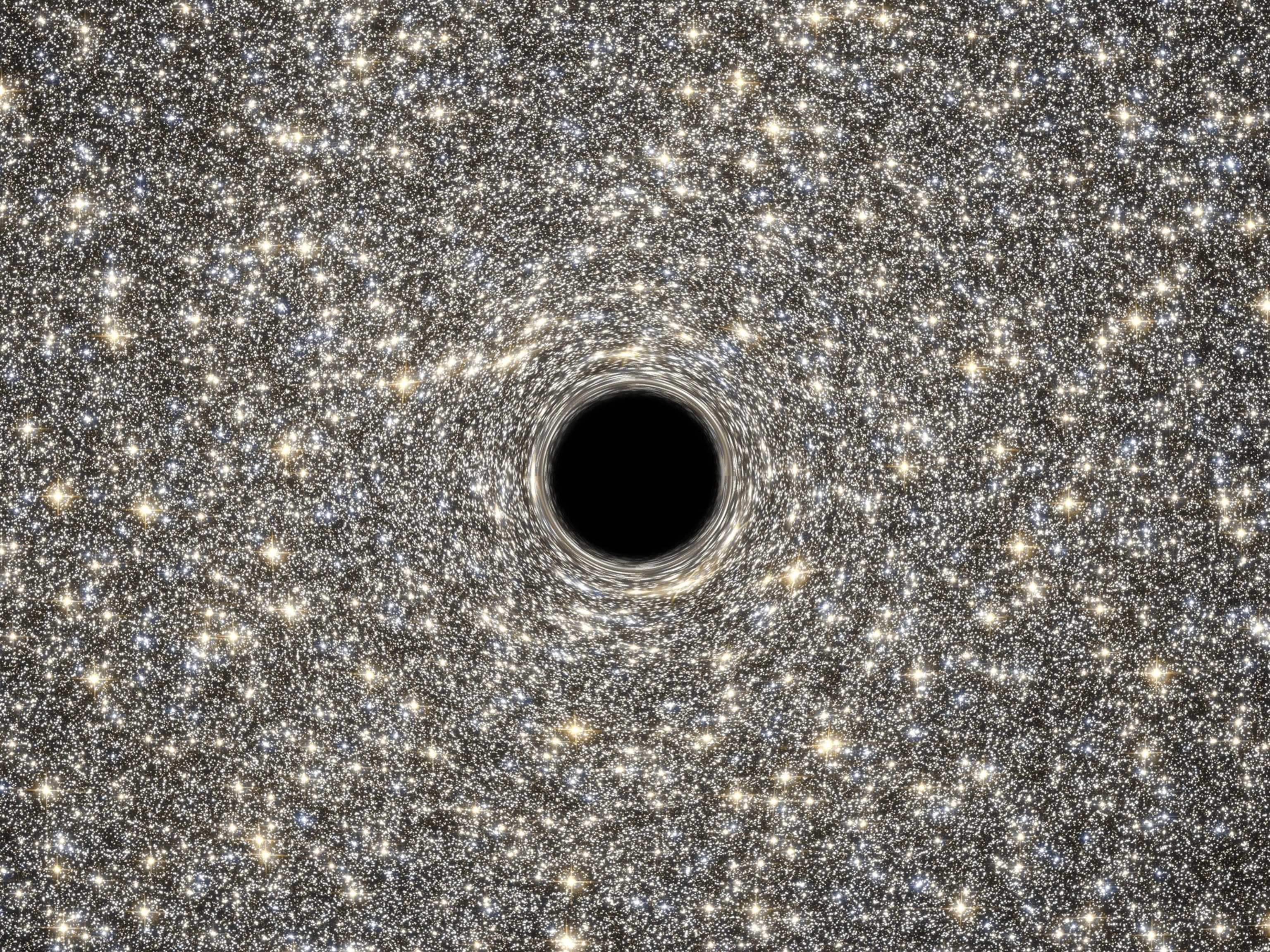
Strange Radio Bursts Seen Coming From a Galaxy Far, Far Away
Astronomers have at last pinpointed the home galaxy of an extremely powerful radio blast, offering clues to what caused the enigmatic event.
Every day, thousands of enigmatic objects in space produce bursts of radio waves that flash for just a few milliseconds yet are capable of generating as much energy as 500 million suns.
Astronomers didn’t even know these fast radio bursts existed until a decade ago. In the years since, they’ve been scouring the cosmos, hoping that by pinpointing their locations, they might be able to figure out what—or perhaps who—is producing them.
Today, a team of astronomers announced that they have finally found their quarry. Relying on a global network of powerful telescopes, they managed to capture a fast radio burst that is broadcasting from a dwarf galaxy some three billion light-years away.
The discovery—described in multiple papers in Nature and the Astrophysical Journal Letters—could have profound implications. It may provide astronomers with a new window into the early universe, while also offering vital clues to a mystery that continues to challenge our perceptions of the cosmos.
“There used to be an expression, ‘as unchanging as the heavens,’” says Shami Chatterjee, one of the astronomers who located the enigmatic burst. “But the heavens are changing very fast. The sky is just boiling and seething with these incredibly powerful events that we don't really understand.”
Counting Electric Sheep
Fast radio bursts were discovered in 2007, when an astrophysicist was studying archived data collected by the Parkes Observatory in New South Wales, Australia. He noticed that, on August 24, 2001, the telescope had detected a strangely powerful eruption of energy that had lasted only five milliseconds.
Initially, astronomers were skeptical. “People said, ‘What if it's local interference, what if it's sheep running into electric fences?’” says Chatterjee.
Doubts continued to grow when astronomers at Parkes discovered that another series of similar signals had been produced by a microwave oven.
Later observations, however, proved that the phenomenon we now call fast radio bursts did indeed originate in space, and based on what we’ve seen so far, Chatterjee estimates that between 5,000 and 10,000 are flaring across the cosmos every day.
But even with this wealth of activity, nobody is sure what causes them.
“For the longest time, we had this situation where the theories about what caused fast radio bursts exceeded the number of bursts we had found, and that is still true today,” says Chatterjee.
Some speculate the bursts are the result of dense neutron stars—remnants of massive stars that have gone supernova—colliding with one another or with comets. Others say the radio signals could be flares released by fast-spinning, highly magnetic neutron stars called magnetars. Or, the bursts might be the death shrieks of stars collapsing into black holes.
And, as is the case with every enigmatic celestial event, some astronomers even speculated that fast radio bursts were being broadcast by aliens. One intriguing “proof” was a mathematical pattern a team claimed to have found in the bursts, but those patterns became increasingly hazy as astronomers gathered more data.
Ultimately, scientists hope that by finding the precise location of a fast radio burst, they’ll obtain valuable clues about its origins. If, for instance, they found one in an old galaxy filled with dead and dying stars, that would lend credence to the theory of colliding neutron stars.

But the bursts have been incredibly difficult to pinpoint, in part because fast radio bursts are, well, fast. Although they’re erupting all over the place, radio telescopes need to be pointed in the right place at precisely the right moment to detect them. What’s more, images captured by a single radio telescope will not offer much detail. For that, astronomers need a group of antennas working together—and a lot of computing power to process the data.
“We do not have eyes on the sky in the way people imagine,” says Chatterjee. “We’re actively monitoring only a tiny, tiny fraction of the sky at any given time.”
Luckily, Chatterjee and his colleagues made a discovery two years ago that changed everything: A new object, called FRB 121102, was repeatedly broadcasting signals.
Can You Hear Me Now?
The discovery of a fast radio burst that produces multiple flashes of radio waves had two important implications. First, this burst wasn’t being caused by a cataclysmic event.
“We knew that it has to be some mechanism that is capable of repetition,” says Chatterjee. “It can't be neutron stars crashing into each other and destroying themselves or something like that.”
And although FRB 121102 wasn’t erupting according to any predictable pattern, the astronomers knew that the radio bursts eventually would occur again in the same region of the sky, providing them the unique opportunity to observe it in action with much higher-resolution telescopes.
Chatterjee and his team used all 27 of the 82-foot-wide dishes at the Very Large Array radio observatory in New Mexico. During some 83 hours of observations that took place over a period of six months, the astronomers obtained images of nine bursts from FRB 121102, allowing them to pinpoint its location.
The next step was to point the powerful Gemini optical telescope at FRB 121102. The astronomers found a dwarf galaxy at the site of the radio burst, which they calculated lies three billion light-years away from Earth. And the observations didn’t end there. The team then took another look at FRB 121102 using a powerful network of European radio telescopes, hoping to obtain an even higher-resolution image.
And that’s when they got extremely lucky. During their observations, FRB 121102 inexplicably “went into hyperdrive,” says Chatterjee.
“This repeating fast radio burst was not a very frequent repeater,” he says. But, as if on cue, FRB 121102 began pulsing, on average, once an hour around the time observations began.
The resulting images revealed that the fast radio burst was emanating from near the center of the dwarf galaxy, which appears to be occupied by a supermassive black hole.

The Unusual Suspects
The discovery that FRB 121102 is hovering near the outskirts of a huge black hole offers new clues about what is causing these radio wave bursts.
One possibility is that the black hole itself is the source. The extreme gravity in its vicinity creates powerful jets of matter traveling at nearly the speed of light. Blobs of ionized gas known as plasma might occasionally drip into these jets, vaporizing in a flash of energy.
Another theory is that the fast radio burst is the gaseous remnant of a supernova with a highly energetic magnetar at its core. Blobs of plasma inside the gassy remnant might occasionally align in such a way that they create an electromagnetic lens that further intensifies the magnetar’s radio wave emissions.
A third possibility is that an object such as a neutron star or magnetar is orbiting the galaxy’s supermassive black hole, creating an unknown type of interaction that is releasing the energy.
“The honest answer is that we don't know, but those are the three classes of models that we have right now that could be viable,” says Chatterjee.
That answer might come into sharper focus as the astronomers continue their research, gathering data on other fast radio bursts to see if their locations share common characteristics. Do they all reside in dwarf galaxies? Are they consistently found on the outskirts of black holes?
Chatterjee doesn’t rule out the possibility that there are multiple phenomena responsible for these radio bursts. In fact, because FRB 121102 is a repeater, it could be an entirely different type of cosmic event than standard fast radio bursts, which flare up only once and are never heard from again.
But if all such bursts do indeed come from distant galaxies, astronomers are confronted with yet another mystery: Why haven’t we detected them in our own galaxy?
Recall that FRB 121102 is located three billion light-years away, which means that we are observing a phenomenon that occurred three billion years ago.
“One possibility is that it has something to do with the evolution of the universe,” says Chatterjee. “It’s something that happened three billion years in the past, when the universe was slightly different than it is today. That's weird. It was going on three billion years ago, but not three million years ago?”
Another theory is that there are bursts going off nearby, but they’re so intense that they saturate telescopes, and astronomers dismiss them as interference from the persistent radio noise produced by cell phones, microwaves, satellites, and radar.
“Could it be that some of the data that we're throwing out as interference is not just interference but actually signals from much closer?” asks Chatterjee. “That would be hysterically funny, and hysterically sad.”






